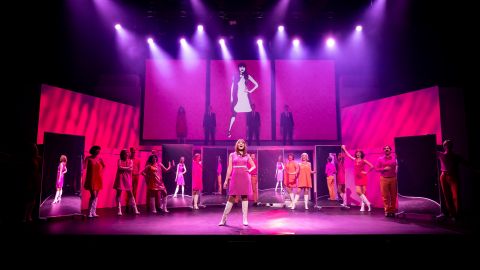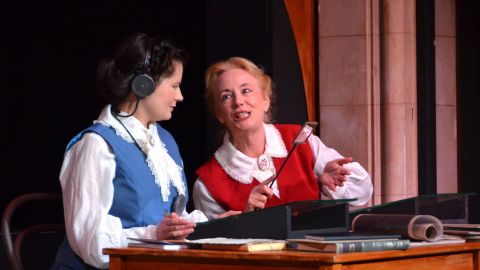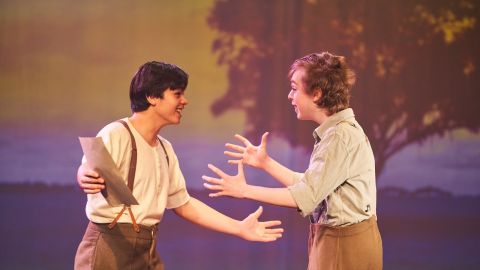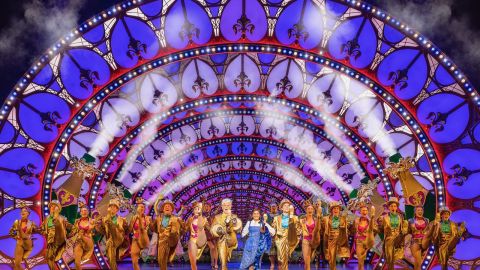One Flew Over The Cuckoo’s Nest: An Australian Adaptation
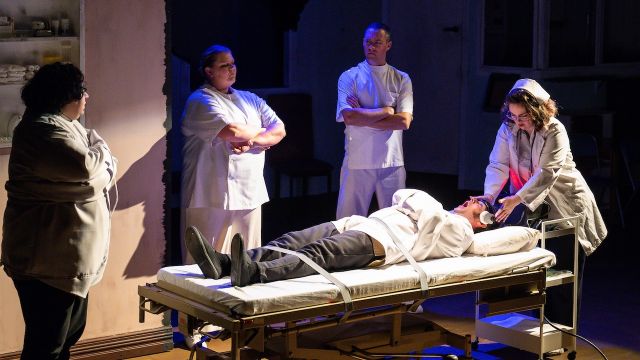
In this Director’s Diary, Chris McRae explains how he got permission to substitute an indigenous Australian for a native American character.
The concept of adapting something regarded as a classic is often considered either brave or foolish. The pressure to ‘get it right’ is immense as stories, characters and legacy are things held dear to many a heart. Secondly, the reasoning behind adapting a piece of text also comes to the fore. Why adapt a text that has already stood the test of time? All of these questions were prevalent as I took the reins for the first ever Australian adaptation of Dale Wassermann’s stage version of Ken Kesey’s iconic novel One Flew Over The Cuckoo’s Nest.
The play struck a chord with the Darlington Theatre Players, based out of Marloo Theatre in Perth, as a challenging strong ensemble driven piece which had a cult following alongside the novel and 1975 Jack Nicholson film. In the back of my head from the beginning was, just how is this production going to be something unique?
It became clear that cultural appropriation and respect would need to be at the forefront of our minds. In the original text, the character of Chief Bromden is an imposing Native American Indian character, and, although deaf and mute, acts as the play’s narrator in an almost spiritual manner, linking his context in the institution to the concept of the ‘Combine’ and its control over humankind. A deep connection to country and the North American landscape ties his story together.
We considered reaching out to performers of Native American background, however we realised that with the American Indians (or Cherokee Nation) being the original custodians of much of the land in the United States (including residents in Oregon in the Pacific Northwest, the setting of the original play), this gave us the perfect link to our own heritage and First Nations culture in Australia.

The character of Chief Bromden was re-imagined as an Aboriginal man, which then gave us the logical progression to adapt the remainder of the play to an Australian setting. Once we had a skeleton concept of the changes we applied for the rights and adaptation permissions, which were granted immediately.
We found many similarities between the cultures. Chief Tee Ah Millatoona (translating to the Pine that Stands Tallest on the Mountain) became Kumba Balga (Big Blackboy) in our own Noongar language. We analysed the script with a fine-toothed comb, bringing the language and cultural geography of the Noongar people of the Whadjuk Nation to this already rich script.
Over the next couple of months, we trawled through the script for ‘Americanisms’ and this eventually became an organic process. Once the show was cast, members of the creative team, and the eventual cast, picked slang, colloquialisms and fine details which were given the Australian touch.
When auditions rolled around, the performers who stepped through the door were excited about the concept. Outside of the Australian decontextualisation, my vision was always to create an immersive experience in which the performers dived deep into the intricacies of these complex characters to bring a sense of rising tension and unnerving humour to the plight of their characters and their situation.

Casting iconic characters such as Randle McMurphy (Luke Miller), Nurse Ratched (Kate O’Sullivan) and Chief Bromden (Andre Victor) was something I wanted to get right. However, I really wanted to approach this play as an ensemble piece, and all the pieces of the puzzle fell into perfect place with an incredible array of performers being cast in the show.
Like all productions and industries at the moment, COVID always loomed as a threat and we had several cast in isolation from the first read through. However, even with a hybrid read through, we had absolute confidence that this was going to be the cast that would be able to do justice to, and work in beautiful collaboration on, such an ambitious project.
With the play having a one location setting (that of the mental hospital day room), I envisioned something that was both detailed but also symbolic in nature, creating a beautifully constructed day room with cracked and breaking walls to represent the slow breaking and deterioration of the mind.
The word ‘distressed’ was used frequently during the set design process, with the eventual wall and floor colours being modelled off the 1960’s photos of Graylands Psychiatric Hospital in Perth. The detailed nurses’ station, external walls and the naming of the ward as ‘Riverton House’, another reference to the original 1960’s Graylands ward, all tied together to create a brilliantly executed environment which was packed with symbolism and authenticity.
Like all stage performances, music, soundscapes and effects bring the action to life, enhancing character, setting and context. We wanted the soundscape and music to represent the descent into madness, tension, violence. Then came the question, “Why don’t we do it live?”

The idea of recording original music was one which I was in love with, but the concept of bringing in a live band took this to the next level.
In what felt like a very elaborate and rewarding puppet act, I had the absolute privilege of latching onto the strings of all the creative elements of this show. The cast and crew grew so close, with every single member of the team committed to making this the most special experience for all involved. In almost an unseen move for a play rehearsal process, we held a ‘Sitzprobe’ at a Sunday rehearsal day with a five-piece musical ensemble.
The score was an incredible mix of thematic material, character motifs and brilliantly executed sounds including the breathtaking addition of Didgeridoo, Didgeribone and rare percussive instruments such as the Jaw Harp and Rain Stick. The music embodied every vision I had for this show, giving it a distinctly Australian sound.
I had several moments of solitude in the weeks leading up to opening night in which I had to take a step back and look at what we had achieved as a team with a sense of awe and pride, the likes of which I hadn’t experienced before. I have done many theatre shows as both a secondary school Drama teacher and a community theatre participant, but this felt different.

We reached opening weekend, and our first review came out with phrases such as “an exceptional adaptation” and “perfectly rehearsed” as well as stellar audience feedback. It was clear that we had achieved our vision of creating a truly unique and culturally relevant adaptation of this classic.
However, the beast that is COVID struck once more. Come the Monday after opening weekend, we had a positive case confirmed within the cast. This number climbed to twelve cast and crew members by the end of Tuesday and the move was made to postpone the season by one week. This did not dampen the spirits of the dedicated cast and creative team, catching up via Zoom, and the administration team at Marloo, conquering the mountain of a job that involved reallocating hundreds of tickets to the new shows. Despite this speed bump, the show came back stronger than ever, and although I found myself onstage for the second week of the run due to cast illness, we had a fully healthy and enthusiastic team back on deck for our closing week.
The reception and momentum One Flew Over The Cuckoo’s Nest received over the three week run was exceptional, with audiences raving and Stage Whispers’ Kimberley Shaw describing the production as “a show that leaves its audience stunned” as well as “clever, innovative and superbly performed”.

Rarely does an opportunity like this one come along, and as a fitting final act for their director, whose second hobby outside theatre is in fact Lego building, the cast presented me with a Lego model of our incredible set complete with all characters in mini figure form … a truly beautiful gift which demonstrated just how special this cast were and will remain to me.
Until next time….
Wire Brier Limber Lock
Three Cockatoos In A Flock
One Flew East
One Flew West
And One Flew Over The Cuckoo’s Nest

CREDITS
Playwright: Dale Wasserman, based on the Novel by Ken Kesey
Script Adaptation: Samuel Yombich Pilot-Kickett, Luke Miller and Chris McRae
Composer and Conductor: Kieran Ridgway
Set Design: Gary Wetherilt.
Photographer: Sean Breadsell - Immaculate Photography


